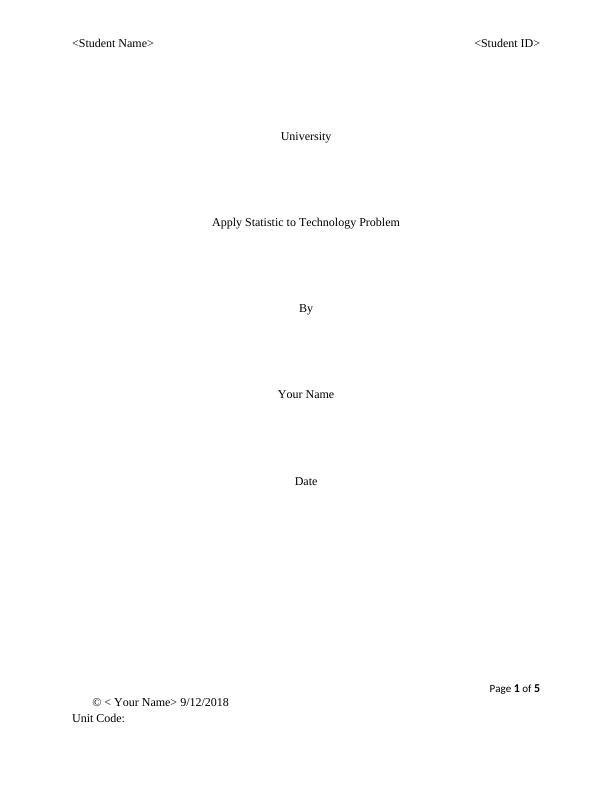Applying Statistics to Solve Traffic Congestion in Australian Cities
This assignment is an assessment tool outline for the course MEM80112 - Graduate Diploma of Engineering. It includes sections on assessment guidelines, assessment matrix, assessment tasks (written questions, practical activities, presentation), and student feedback on the unit.
5 Pages991 Words387 Views
Added on 2023-05-28
About This Document
This article discusses how statistics can be used to solve traffic congestion in Australian cities. Using data from the Opal Tap on and Tap Off Location, the article analyzes the most commonly used mode of transport and the railway station that serves the most people. The results can help the government allocate funds for the development of transport infrastructure.
Applying Statistics to Solve Traffic Congestion in Australian Cities
This assignment is an assessment tool outline for the course MEM80112 - Graduate Diploma of Engineering. It includes sections on assessment guidelines, assessment matrix, assessment tasks (written questions, practical activities, presentation), and student feedback on the unit.
Added on 2023-05-28
ShareRelated Documents
End of preview
Want to access all the pages? Upload your documents or become a member.
Analysis of Transport Data in NSW: Statistics Study Material
|11
|1882
|92
Analysis of Public Transport System in NSW using Opal Tap On/Off Data
|10
|2442
|484
Statistical Modelling for Public Transport System in NSW
|10
|1794
|100
Statistical Modelling for Public Transport Infrastructure
|10
|2181
|132
Statistical Modelling for Public Transport Infrastructure Planning
|7
|1305
|387
BU1007 Business Data Analysis and Interpretation
|18
|2568
|45


